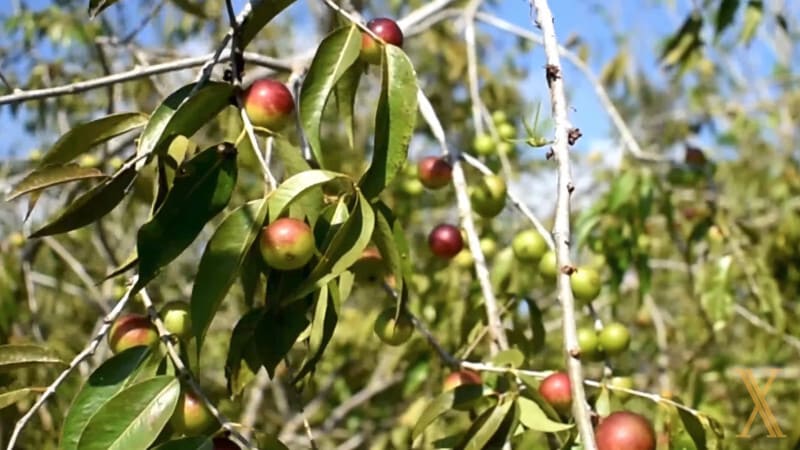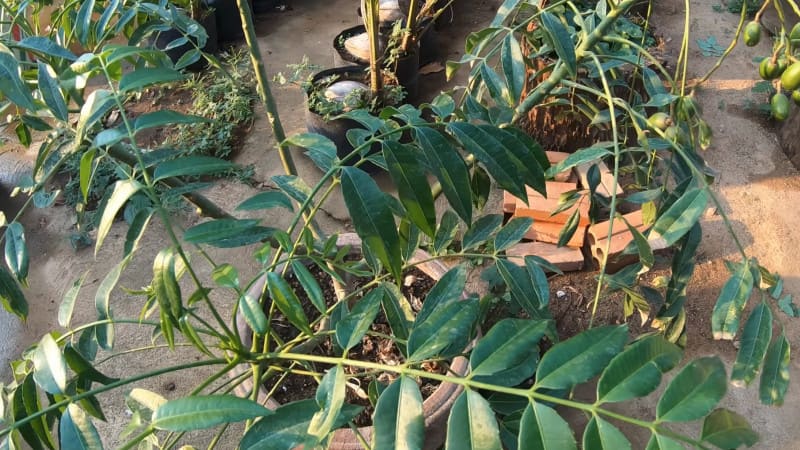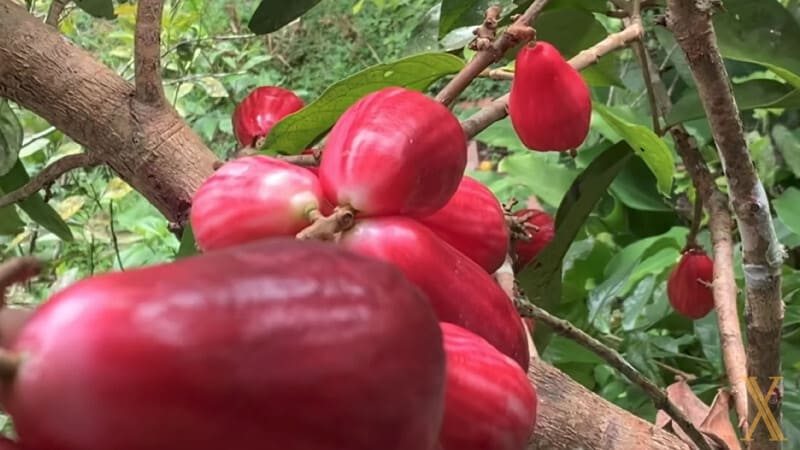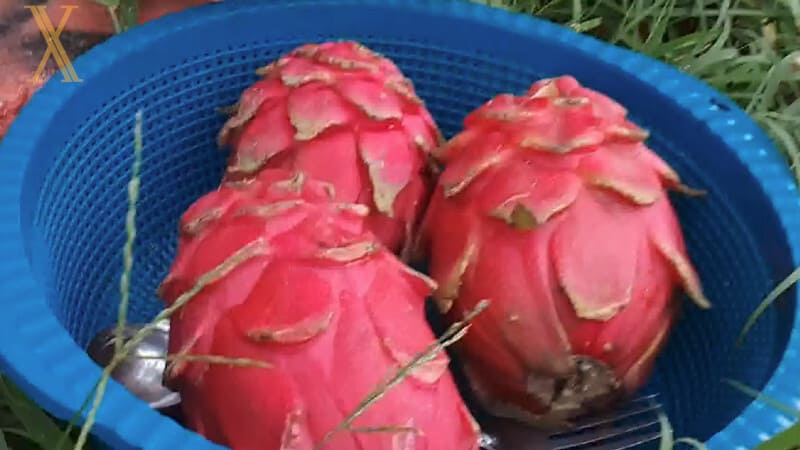
It is a tropical fruit native to the Amazon area of Peru. However, it is found in other regions and countries such as Bolivia, Brazil, Ecuador, Venezuela, and Colombia. It is considered the best natural source of vitamin C, even above oranges and lemons.
This plant generally tends to be shrubby and constitutes a resource of great importance for the environment since it is a plant species that can occur very quickly on the banks of rivers. In addition, it provides excellent benefits to the human body and is widely used in food and medicinal fields.
Planting and reproduction
The reproduction of camu camu is carried out in two ways, asexually and sexually. Sexually it manifests itself through good germination, starting from the seeds, and in just 12 days, it is ready for transplantation.
In the case of asexual reproduction, splinter grafting is applied for fruit propagation, where cuts are made to the stem, and the cuttings of the plant are inserted.
However, the best way to plant camu camu is through furrows, as we will explain below:
- Step 1. As a first step, the land where you must prepare the soil where you want to plant the Camu Camu.
- Step 2. Select the seeds in the best conditions that is, that they are fresh and clean.
- Step 3. The seeds are sown in pots previously prepared with a good amount of fertilizer and wait until germination, which will begin approximately in 12 to 15 days.
- Step 4. Once germinated, it is transplanted to the soil or area prepared in step 1.
- Step 5. In this step, it only remains to apply the necessary care so that the plant grows appropriately. Of course, this post explains that in the following sections.
As an additional recommendation, it is necessary to consider planting at a distance of 3 x 3 m. You can grow about 1000 plants per hectare if the holes are 15 x 15 x 15 cm.
Temperature
Culturing camu camu requires bioclimatic needs representing a tropical environment, where the temperature ranges between 22°C and 32°C at its highest levels.
Soil
The soil should have a minimum mud depth of 25 cm with no sand on the surface.
It is essential to know that the soil, when suitable for planting camu – camu, should not have water in a depth of approximately 40 cm, as it can die. In this case, it is recommended to make an excavation first, and if a depth of about 70 cm is achieved without getting water, it is a sign that this soil is suitable for growing this fruit.
Harvest
The time to be harvested is approximately eight years after planting; when it reaches adequate commercial ripening, it has a reddish coloration as a sign of being ripe the fruit. Its season of most extraordinary production is from February to June and October to November.
Zoning for planting
For the planting of camu camu, specific criteria contribute to the installation of the system of this crop, so take note:
- Condition of the floor: the floor must have flooded areas.
- Water status: it must be “white” because it usually has a higher content of nutrients and sediments, which allows abundance in its productive capacity.
- Erosion: it is recommended that the planting is carried out in plots 500m away from the banks of the rivers, which minimizes the risks of sedimentation or erosion.
- Waterlogability: it is essential to note that the water should not be constant, especially in the fruiting season. After the harvest, you should establish the irrigation system periodically.
- The soil and its characteristics: it is vital to consider the appropriate requirements for cultivating this fruit. The slopes must be checked, which must be few, at depth in terms of the clay layer; they should not be impermeable soils.
- Weed and nutrition: when the level of weeds is high, the nutritional status of the ground tends to decrease, so they must be controlled so that the production environment of camu camu is attractive.
Decrease in production
Different pests affect the healthy growth of the camu camu crop, which generates losses in the production of the same. The most notorious are the following:
- Fallen flowers: when they occur more than five days of summer, during flowering, and often the rains enter, this climate change produces the fall of flowers and the affection of pests that contribute to them.
- Fallen fruits: when a summer of 17 days occurs, that is, during August and September, in the process of fruiting, the fall of the fruits can be observed. These tend to make cracks about 3 cm wide, so the soil dries out.
Prevention and control of cultivation
- Plants should be planted at a distance of approximately 10 x 10 cm, especially in nurseries.
- When growing in greenhouses, sunlight should be allowed to enter to reduce humidity.
- Seedlings that have been affected should be burned and removed when the infestation is about to begin.
- Nurseries should not be carried out under trees that offer shade to the plantation.
- You should carry out weed cleaning should be carried out periodically.
- The spread of pests should be avoided so that it does not affect the crop.
- Be cautious with some tiny pests you can easily carry in boots, machetes, or other tools.
- The fruits should be harvested with a coloration between green and reddish.
Frequently asked questions
Undoubtedly, talking about such an exotic fruit produces some curiosity, and it is evident that doubts arise about it, this time some of those concerns are offered and to which answers must be given:
What are the indications for the consumption of camu camu?
One of the indications for which camu camu is used is to improve liver health. In addition, this fruit, for its properties, enhances people’s mood due to the amount of serotonin it can produce, stimulating this hormone in the body, thanks to its high vitamin C content.
It is also indicated for the health of the gums, avoiding tartar and tooth decay. In the same way, it is suggested to improve the health of the cardiovascular system and has anti-aging properties due to its potent anti-inflammatory action.
How much camu camu should be consumed daily?
It is recommended, per adult, to consume 10 grams of pulp daily since this amount is equivalent to 2,700 mg of vitamin C. either in juice or fresh covers this need quickly.
How can oxidation of the fruit be avoided?
To preserve the nutritional values of the fruit avoiding its oxidation, you can use stabilizers of natural origin that delay this process, such as water with salt or sugar. Placing the pulp in a container with these stabilizers slows its oxidation and gives it flavor depending on what will be prepared.
How wide varieties of camu camu are there?
It is said that, in Peru, there are two large varieties of this fruit, the arboreal (Myrciaria floribunda) and the shrub (Myrciaria dubia H. B. K.), the latter being the most widespread, extensive, and cultivated in the Peruvian Amazon area. It is even known that it is the most exported for its quality and the quantity of fruit harvested in each fruitful season.
Check this other fruits
Want to know more about camu camu?








